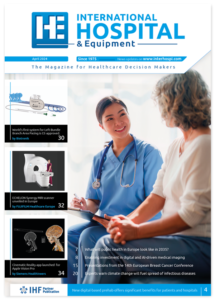Filling need for fast and accurate assessment of blood’s ability to clot
Case Western Reserve University researchers have developed a portable sensor that can assess the clotting ability of a person’s blood 95 times faster than current methods-using only a single drop of blood.
Even better, the device provides more information about the blood than existing approaches.
Rapid and accurate assessments are essential to ensuring that patients prone to blood clots-as well as those who have difficulty clotting-receive care appropriate to their conditions.
Recently, XaTek, a new Cleveland-based company, licensed the technology for the device-called ClotChip-with a goal of bringing it to market within the next three years. Case Western Reserve’s Technology Transfer Office negotiated the agreement between the university and the company.
‘ClotChip is designed to minimize the time and effort for blood-sample preparation. [It can] be used at the doctor’s office or other points of care for patients on anticoagulation therapy, antiplatelet therapy or who have suffered a traumatic injury causing bleeding,’ said Pedram Mohseni, professor of electrical engineering and computer science at Case Western Reserve, who led the development of ClotChip with Michael Suster, senior research associate in the EECS department.
Existing measures typically require patients to visits laboratories where expert technicians administer tests, an approach that typically is time-consuming and expensive. While a few methods exist to allow on-site testing, to date they have not proved nearly as precise as laboratory-based versions.
In preliminary tests, however, Case Western Reserve’s technology provided results in 15 minutes, as compared to conventional measures that can take a day or longer to yield results. ClotChip also provided more information about the coagulation process, including the effects of a new class of drugs called target-specific oral anticoagulants, or TSOACs.
TSOAC drugs block clots from forming in a different way than warfarin which had dominated the market for decades. Warfarin, however, can interact negatively with several medications and foods and also requires frequent blood tests to monitor the drug’s effects.
To monitor clotting, ClotChip uses an electrical technique called miniaturized dielectric spectroscopy, an approach that Mohseni, Suster and their team began developing six years ago. In essence, the technique applies an external electric field to the drop of blood, then quantitatively measures how the blood affects that field. The measurements reflect the ability of the blood to clot.
Because the device works so quickly, emergency responders could use it on site to determine whether a patient in trauma is on one of the blood thinner medications. Such critical information also could be invaluable to medics in wartime.
Case Western Reserve University http://tinyurl.com/zlo6h5s

